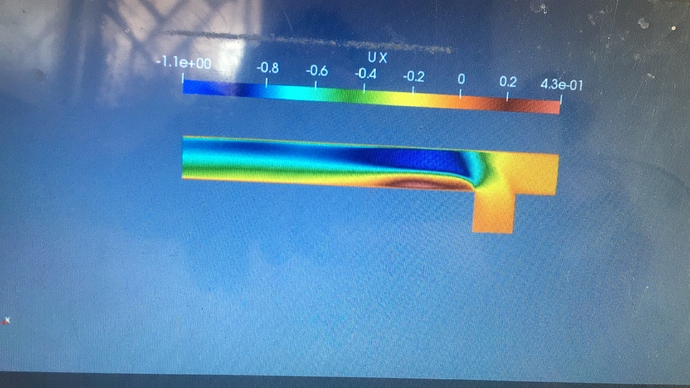
#really just hold constructor data that will be passed #to create a curve composed of line segments. #Make a vtkPolyLine which holds the info necessary Pdo.GetPointData().AddArray(vals2) #'Second Property' scalar Pdo.GetPointData().SetScalars(vals1) #'First Property' scalar #connected to make a 1D, 2D, or 3D object. #A 'cell' is just an object that tell how points are #create a 'cell' object that ties points together #Right now the points are not associated with a line. #Add the points to the vtkPolyData object Vals2.InsertNextValue(math.sin(i*2.0*math.pi/numPts)) #Order of Scalars should match order Pts were added #Note that the first point is at index 0 (not 1). #The first parameter indicates the reference. #Insert the Points into the vtkPoints object #visible in Paraview dropdown lists for setting #Also set the name for the scalar that will be #Associate scalar values with the points. #This will store the points for the Helix

#Get a vtk.PolyData object for the output #This is intended as the script of a 'Programmable Source' This lists the available scalars that are defined at points along the helix. The scalar called 'First Property' or the scalar called 'Second Property' can be chosen from the 'Display' tab of the 'tube' filter under the 'Color by' option. The scalar data can be visualized using filters such as the 'tube' filter where the scalar value is represented as a color. It generates a helix with two sets of scalar data defined along the helix. This is intended as the Python script for a 'Programmable Source'. # tet orientation than VTK, and wish to use the vtkMeshQuality filter). # This filter flips the tetrahedra (useful, if you have different convention of # This filter computes the radius h of the tetrahedra in an unstructured mesh: This filter computes the volume of the tetrahedra in an unstructured mesh:.# assuming data.csv is a CSV file with the 1st row being the names names forĭata = np.genfromtxt("data.csv", dtype=None, names=True, delimiter=',', autostrip=True) # Refer to numpy documentation for genfromtxt() for details on # We will use numpy to read the csv file. #skip first line, presumed to be a headerįor pos,word in enumerate(line.split(",")):Īrray = pdo.GetPointData().GetArray(pos-3)Īnother example, this time using numpy and reading the CSV to a vtkTable. The file is of the form (where :įilename = os.path.normcase("c:/datafile.txt").This source reads a text file and produces a data set.These will not directly work from the python shell or pvpython. Note: These scripts are meant to be used at values for the Script paramaters for Programmable Filter or Programmable Source as identified by the title.
#Paraview python programmable filter code#
It would be nice, if you have written a possibly useful pp-filter, if you would add the code to this page. 11 Labeling common points between two datasets (Filter)Įxamples of Filters Programmed using the Python Programmable Filter.10 Producing An Unstructured Grid (Source).8 Producing Data with Timesteps (Source).



 0 kommentar(er)
0 kommentar(er)
